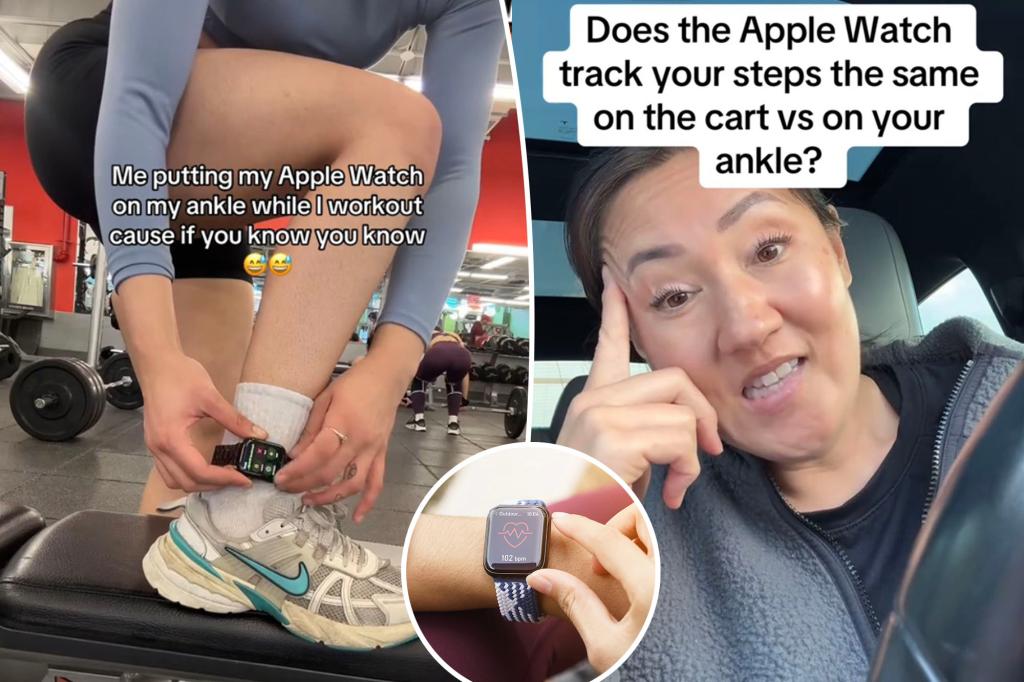The Evolution of Fitness Tracking: Why Apple Watch Users Are Switching to Their Ankles
In the world of fitness, every detail matters. From the type of shoes worn to the trajectory of a workout plan, enthusiasts are constantly on the lookout for ways to optimize their routines and track progress more accurately. One of the latest trends in this space involves a simple yet ingenious hack: wearing the Apple Watch not on the wrist, but on the ankle. This unusual yet effective strategy has gained traction among fitness influencers and everyday users alike, who swear by its ability to provide more accurate readings during workouts and daily activities. But why is this happening, and what makes the ankle such a superior spot for tracking fitness? Let’s dive into the story behind this unexpected tweak and explore its implications for the future of wearable technology.
The Apple Watch: A Smart but Sometimes Flawed Fitness Companion
The Apple Watch is widely regarded as one of the most advanced wearable devices on the market. Priced at upwards of $1,000, it comes equipped with cutting-edge hardware and software designed to track heart rate, estimate calories burned, and offer insights into overall health and fitness. Recent studies have even hailed the device for its “clinically acceptable accuracy” in measuring heart rate during exercise, making it a valuable tool for both fitness enthusiasts and individuals with cardiovascular conditions. In fact, the Apple Watch has been credited with saving lives by detecting irregular heart rhythms and other critical health metrics.
However, like any piece of technology, the Apple Watch isn’t perfect. One common complaint among users is its tendency to underperform when it comes to tracking certain types of physical activity. For many, the issue lies in where the device is worn: the wrist. While the wrist may seem like the most convenient and logical place to wear a smartwatch, it doesn’t always provide the most accurate readings during exercise. This is particularly true for movements that involve repetitive hand motions or stationary arms, such as weight lifting or walking on a treadmill.
It’s this gap in functionality that has led some users to think outside the box—or, in this case, above the ankle.
The Ankle Hack: A Game Changer for Fitness Enthusiasts
Enter Ana Espinal, a 23-year-old fitness enthusiast from Manhattan, who has become one of the key proponents of the ankle-wearing trend. In a TikTok video that has resonated with her 84,000 followers, Espinal shared her personal experience with the Apple Watch. Like many users, she found that wearing the device on her wrist often resulted in incomplete or paused workout recordings. Frustrated by the inconsistency, she decided to experiment with a different placement—and discovered that wearing her Apple Watch on her ankle solved the problem entirely.
Espinal’s experience is far from unique. Kristen Hollingshaus, a content creator from San Francisco, has been advocating for the ankle hack for years. As someone who combines working out on a walking pad with getting work done on her laptop, Hollingshaus found that the Apple Watch performed far better when strapped above her moving foot rather than on her relatively stationary wrist. “It’s the best hack ever,” she raved in a post. “I basically do this every day.”
The same hack has also proven effective for less intense activities. TikTok user @MediocreMomAdventures, a working mom of two who has lost over 35 pounds, conducted her own experiment to test the device’s accuracy. She took two 10-minute walks around a Target store: one with the Apple Watch on her wrist and the other with the watch tucked into her sock. The results were striking. When worn on the wrist, the device recorded just 91 steps in 10 minutes. When worn on the ankle, it logged an impressive 835 steps—a difference so significant that she described it as “mind-blowing.”
The Science Behind the Ankle-Wearing Trend
So why does wearing the Apple Watch on the ankle produce more accurate results? The answer lies in the nature of the device’s tracking technology. The Apple Watch relies on sensors that detect movement and changes in acceleration to estimate activity levels. When worn on the wrist, these sensors can be easily thrown off by stationary positions or repetitive motions that don’t involve significant arm movement. For example, walking on a treadmill or pushing a shopping cart may not engage the wrists enough to trigger accurate step or calorie measurements.
On the other hand, the ankle is directly involved in nearly all forms of lower-body movement. Whether you’re walking, running, or doing leg-based exercises, the ankle experiences consistent and pronounced movement patterns that the Apple Watch’s sensors can pick up with greater accuracy. This makes it an ideal spot for tracking daily steps, distance, and overall physical activity.
Moreover, wearing the Apple Watch on the ankle ensures that the device remains in constant contact with the body part most responsible for movement. This reduces the likelihood of gaps in data collection and provides a more comprehensive picture of one’s fitness efforts.
The Broader Implications for Wearable Tech
The Ankle Watch trend speaks to a larger issue in the world of wearable technology: the need for greater adaptability and customization in fitness tracking devices. While the Apple Watch and similar products have made significant strides in terms of functionality, they are not one-size-fits-all solutions. Different bodies, activities, and lifestyles require different approaches to tracking—and it’s up to users to experiment and find what works best for them.
At the same time, this trend highlights the resourcefulness and ingenuity of everyday users in addressing the limitations of technology. In the absence of a universal solution, individuals like Espinal, Hollingshaus, and @MediocreMomAdventures have taken matters into their own hands, discovering creative workarounds that enhance the performance of their devices. This kind of user-driven innovation serves as a reminder that technology is only as powerful as the ways in which we choose to use it.
As wearable technology continues to evolve, the hope is that manufacturers will take note of these DIY hacks and incorporate more flexible design options into their products. Until then, the Ankle Watch trend remains a testament to the power of creativity and persistence in the pursuit of better health and fitness.
Final Thoughts: Embracing the Ankle Revolution
For now, the Ankle Watch hack is here to stay—and it’s worth giving it a try if you’re frustrated with inconsistent fitness tracking. Whether you’re a dedicated gym-goer or someone who prioritizes daily walks, strapping your Apple Watch to your ankle could unlock a whole new level of accuracy and insight into your physical activity.
At the end of the day, fitness is about results—and if a simple change in how you wear your smartwatch can help you achieve your goals, then why not give it a shot? After all, as @MediocreMomAdventures so succinctly put it: “The big lesson here is… put your watch on your ankle.”












